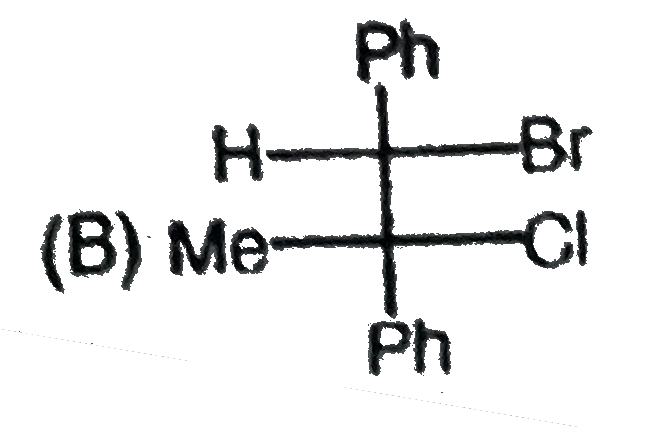The products of the following reaction are SiO2+CΔ−−→
SiC and CO2
SiO and CO
SiC and CO
Si and CO2
The correct Answer is:C
To determine the products of the reaction between silicon dioxide (SiO₂) and carbon (C) when heated, we can follow these steps:
1. Identify the Reactants:
The reactants in the reaction are silicon dioxide (SiO₂) and carbon (C).
2. Understand the Reaction Conditions:
The reaction is carried out upon heating (indicated by the Δ symbol). This suggests that the reaction may involve a reduction process.
3. Write the Initial Reaction:
When SiO₂ reacts with carbon, the initial reaction can be represented as:
SiO2(s)+C(s)Δ−→SiO(g)+CO(g)
Here, silicon monoxide (SiO) is formed in the gaseous state, and carbon monoxide (CO) is also produced in the gaseous state.
4. Further Reaction of SiO:
The silicon monoxide (SiO) can further react with carbon:
SiO(g)+C(s)Δ−→SiC(s)+CO(g)
In this step, silicon carbide (SiC) is formed as a solid, and more carbon monoxide (CO) is produced.
5. Final Products:
After considering both reactions, the final products of the overall reaction are:
SiC(s)+CO(g)
Final Answer:
The products of the reaction between SiO₂ and C when heated are silicon carbide (SiC) and carbon monoxide (CO).
---
The reactants in the reaction are silicon dioxide (SiO₂) and carbon (C).
The reaction is carried out upon heating (indicated by the Δ symbol). This suggests that the reaction may involve a reduction process.
When SiO₂ reacts with carbon, the initial reaction can be represented as:
SiO2(s)+C(s)Δ−→SiO(g)+CO(g)
Here, silicon monoxide (SiO) is formed in the gaseous state, and carbon monoxide (CO) is also produced in the gaseous state.
The silicon monoxide (SiO) can further react with carbon:
SiO(g)+C(s)Δ−→SiC(s)+CO(g)
In this step, silicon carbide (SiC) is formed as a solid, and more carbon monoxide (CO) is produced.
After considering both reactions, the final products of the overall reaction are:
SiC(s)+CO(g)
The products of the reaction between SiO₂ and C when heated are silicon carbide (SiC) and carbon monoxide (CO).
Topper's Solved these Questions
- S AND P BLOCK ELEMENTSBOOK - ERRORLESS CHAPTER - S AND P BLOCK ELEMENTSEXERCISE - Ordinary thinking (Nitrogen family)
193 Videos
- S AND P BLOCK ELEMENTSBOOK - ERRORLESS CHAPTER - S AND P BLOCK ELEMENTSEXERCISE - Ordinary thinking (Oxygen family)
109 Videos
- S AND P BLOCK ELEMENTSBOOK - ERRORLESS CHAPTER - S AND P BLOCK ELEMENTSEXERCISE - Ordinary thinking (Boron family)
79 Videos
- Practical Organic ChemistryBOOK - ERRORLESS CHAPTER - Practical Organic ChemistryEXERCISE - JEE Ssection (More than one choice correct answer)
16 Videos
- SOLID STATE BOOK - ERRORLESS CHAPTER - SOLID STATE EXERCISE - JEE section (Numeric )
1 Videos
Similar Questions
Knowledge Check
The final product of the following reaction is

COCH3Δ−−→BrCl/CCl4−−−−−−→A B
B C
C D
D
The product (D) of the following reaction is
CH3ClKCN−−→(A)H2∅H+−−−−→(B)NH3−−→(C)Δ−−→(D)ACH3CH2NH2BCH3CNCHCONH2DCH3CONH2The product (C) in the following reaction is
Phenol
Zn−−−−−→Δ(A)CH(3)CltAnhydrousAlCl3(B)KMnO4/OHϴ−−−−−−−−−−−→Δ(C)A B
B C
C D
D
The product of following reaction
C6+Cl2FeCl3−−−→? is
View SolutionThe products 'C' in the following reaction is
RCOOHNH2−−→(A)heat−−→(B)P2O5.heat−−−−−→(C)
View SolutionOne of the product of the following reaction is
KCNO+(NH4)2SO4Δ−−→
View SolutionThe product/ s of the following reaction is/are:
 (i)CHCl3+NaOH1Δ−−−−−−−−−−−−−→(ii)H⊕(iii)conc.NaOH(excess)1Δ−−−−−−−−−−−−−−−−−−→(iv)H⊕ (product/s)
(i)CHCl3+NaOH1Δ−−−−−−−−−−−−−→(ii)H⊕(iii)conc.NaOH(excess)1Δ−−−−−−−−−−−−−−−−−−→(iv)H⊕ (product/s)
View SolutionThe product (C) in the following reactions is:
RCOOHNH3−−→(A)Heat−−→(B)P2O5−−→Δ(C)
View Solution
